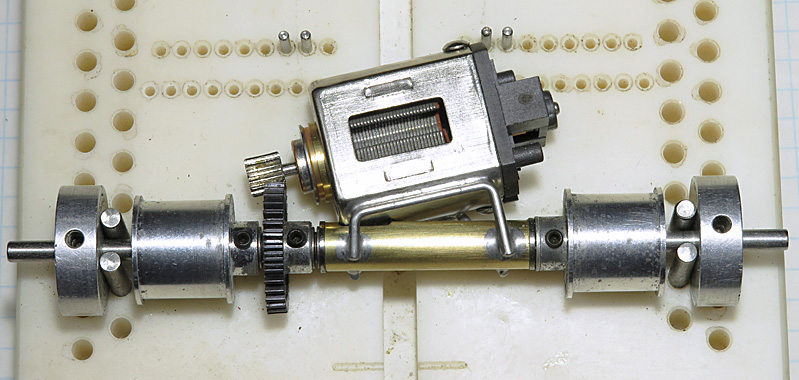Early 1968 was a marvelous time to be a young slot racer. People were coming up with all sorts of clever new ideas, most of which didn't work! ![]() But a few of those ideas did work, and some even had the power to change, overnight, the way we built our cars. One of the biggest was anglewinder drive.
But a few of those ideas did work, and some even had the power to change, overnight, the way we built our cars. One of the biggest was anglewinder drive.
Gene Husting's simple 1/24 adaptation of something the Midwest 1/32 scale racers had been doing for awhile...
...caused nothing short of a revolution in slot car chassis design that captures scratchbuilder's imaginations, including mine, even a half century later.
Rick Thigpen sent me a PM and said he wanted to build a "what if" interpretation of the first anglewinder, and I thought it would be fun to go along and build one too. I had built my own version years ago out of whatever parts I had on hand, but Rick wants to build this one period-correct, so mine would have to be P.C. too.
BTW: Larry Horner is currently building a Retro-style version, so it seems we've got a building party getting started here. ![]()
Rick set out his premise in his build thread. I figured for the sake of novelty mine needed to be a little different, so I chose to build a car adapted to "1/24 club and/or home track" racing. My premise:
* Early April 1968. I am an avid east coast scratchbuilder and club racer with a home track. Both the 110 ft/lap club track and my 78 ft/lap home track are large enough to run 1/24 scale cars, which we do.
* Rick Thigpen (my west coast contact) sent me photos and drawings of something new. It took four days to get the photos developed and three days to get them to me (by U.S. Mail), so I'm already a week behind..
* I can't wait to adapt this crazy new idea I see for use on a smaller club style 1/24 track with sharper, flatter turns, shorter straights and less overall traction.
Club/home track rules include maximum 1/2" wide solid rubber tires running on a dry track surface, so I will not be using a 26 or 25 gauge motor like the commercial racers. Other than that, the chassis and body will be much the same (angle drive with a stressed motor, wide drop arm, hinged side pans topped off with a Lola T70 coupe body).
Time to start gathering parts... ![]()

























































